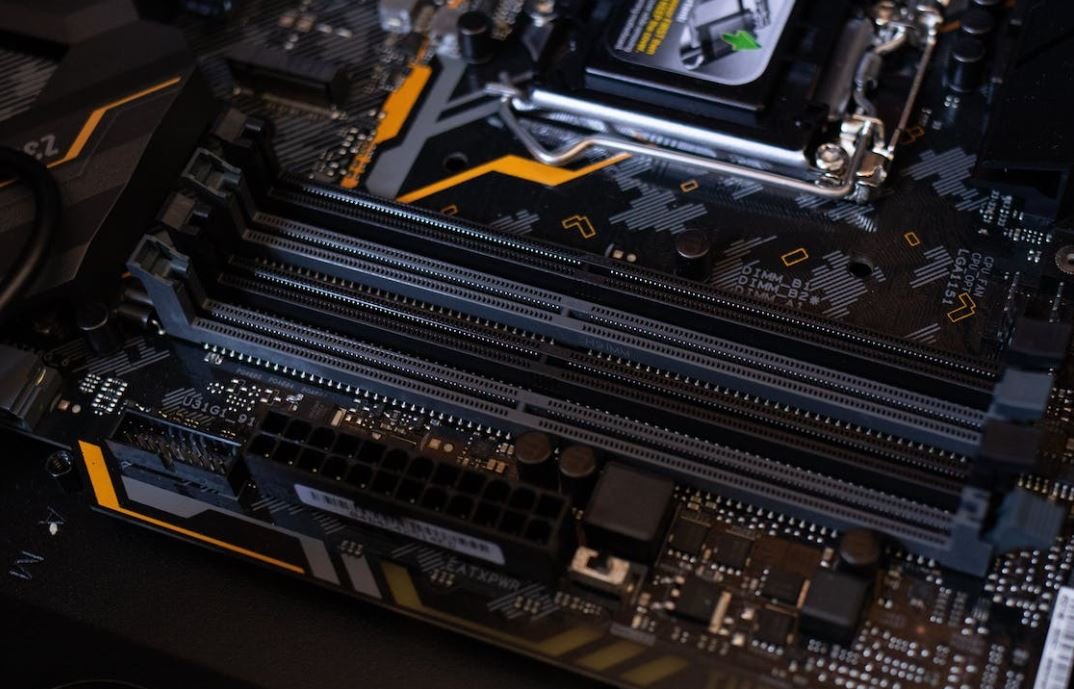Introduction:
The Tesla Gigafactory is a state-of-the-art facility where Tesla manufactures batteries for its electric vehicles. With its massive production capacity, the Gigafactory plays a crucial role in fulfilling Tesla’s goal of sustainable transportation and energy.
Key Takeaways:
– Tesla’s Gigafactory is the largest battery manufacturing plant in the world.
– The Gigafactory’s capacity expansion aims to meet the growing demand for electric vehicles and renewable energy storage.
– Tesla plans to build multiple Gigafactories worldwide to optimize production and reduce shipping costs.
Tesla Gigafactory Capacity:
At full capacity, the Tesla Gigafactory can produce a staggering 35 gigawatt-hours (GWh) of battery cells per year. This makes it the largest battery manufacturing plant globally, surpassing all other competitors.
To put this number into perspective, 35 GWh is enough battery capacity to power over 500,000 Tesla Model 3 vehicles or provide electricity to around 350,000 average U.S. households for an entire day.
Gigafactory Expansion:
Tesla has been actively expanding the Gigafactory’s capacity to keep up with the increasing demand for electric vehicles. The company has a bold vision of producing 100 GWh of batteries per year, which is roughly three times the current capacity.
To accomplish this, Tesla plans to build additional Gigafactories in strategic locations across the globe. The proximity of these factories to their respective markets will reduce shipping costs and enable faster delivery of batteries to customers.
Benefits of Gigafactory Expansion:
1. Economies of Scale: By ramping up production, Tesla can take advantage of economies of scale, which will lower battery manufacturing costs and make electric vehicles more affordable.
2. Reduced Environmental Impact: With a larger capacity, the Gigafactory can support higher battery production for electric vehicles, leading to reduced greenhouse gas emissions from traditional gasoline-powered vehicles.
3. Energy Storage for Renewable Sources: The Gigafactory’s expansion will enable Tesla to produce more batteries for renewable energy storage. This will help stabilize electricity grids by storing excess energy generated from renewable sources and releasing it when needed.
Gigafactory Capacity vs. Competitors:
To understand the magnitude of Tesla’s Gigafactory capacity, let’s compare it with other prominent battery manufacturers:
Table 1: Battery Manufacturers and Their Annual Production Capacities (in GWh)
| Manufacturer | Annual Production Capacity |
|———————–|—————————-|
| Tesla Gigafactory | 35 |
| CATL | 30 |
| LG Energy Solution | 30 |
| BYD | 20 |
| Contemporary Amperex | 15 |
Table 2: Tesla’s Gigafactory Compared to the Total Battery Capacity of Electric Vehicles Sold Worldwide in 2020 (in GWh)
| Tesla Gigafactory | Total Electric Vehicle Battery Capacity |
|———————–|—————————————-|
| 35 | 139 |
Table 3: Planned Gigafactories Around the World
| Gigafactory Location | Planned Capacity (GWh) |
|———————–|———————–|
| Berlin, Germany | 40 |
| Shanghai, China | 35 |
| Austin, Texas, USA | 35 |
In Conclusion:
Tesla’s Gigafactory is a force to be reckoned with in the battery manufacturing industry. Continual expansion and investment in new facilities allow Tesla to take a leading role in accelerating the transition to a sustainable energy future. With increasing capacity and the planned construction of additional Gigafactories, Tesla is well-positioned to meet the ever-growing demand for electric vehicles and renewable energy storage.

Common Misconceptions
Tesla Giga Factory Capacity
There are several common misconceptions surrounding the capacity of Tesla’s Giga Factory. These misconceptions often arise due to a lack of information or misinformation. It’s important to clarify these misconceptions to gain a better understanding of the true capabilities of the factory.
- Tesla’s Giga Factory can only produce electric cars.
- The Giga Factory’s capacity is fixed and cannot be expanded.
- The Giga Factory can fulfill Tesla’s global demand on its own.
Contrary to the first misconception, Tesla’s Giga Factory actually has the capacity to produce not only electric cars but also battery cells. The factory is designed to manufacture lithium-ion battery cells and assemble them into battery packs for use in Tesla’s electric vehicles. This allows Tesla to have better control over its supply chain and reduce reliance on external suppliers for critical battery components.
- The Giga Factory produces only battery cells and not battery packs.
- It takes longer to produce a battery pack compared to manufacturing a car.
- The Giga Factory’s capacity for battery production far exceeds its capacity for vehicle assembly.
Regarding the second misconception, the capacity of Tesla’s Giga Factory is not fixed and can be expanded. Tesla has ongoing plans to increase the production capacity of the factory over time. As demand for Tesla vehicles and energy storage systems grows, the company has the flexibility to scale up the factory to meet that demand. This expansion is crucial for Tesla’s goal of mass-producing affordable electric vehicles and driving the transition to sustainable energy.
- Tesla plans to expand the Giga Factory’s capacity in the near future.
- The expansion of the factory is dependent on the growth of the electric vehicle market.
- The increased capacity of the Giga Factory will lead to lower prices for Tesla vehicles and energy products.
Lastly, the third misconception suggests that the Giga Factory can fulfill Tesla’s global demand on its own. While the Giga Factory is indeed an impressive facility, it is not currently capable of meeting Tesla’s global demand without additional production facilities. Tesla recognizes the need for multiple Gigafactories to produce vehicles and battery cells at a scale necessary to satisfy the global market. The Giga Factory in Nevada, USA, is just one component of Tesla’s larger manufacturing strategy.
- Tesla is building Gigafactories in other locations to address global demand.
- The Giga Factory currently supplies vehicles and components primarily to North America.
- Opening new factories allows Tesla to localize production and reduce transportation costs.

Introduction
The Tesla Giga Factory is a massive manufacturing facility that plays a crucial role in Tesla’s mission to accelerate the world’s transition to sustainable energy. This article explores the impressive capacity of the Giga Factory, detailing various aspects such as production capabilities, energy consumption, and employment opportunities. Each table presents intriguing data, shedding light on the magnitude of this groundbreaking facility.
Total Annual Vehicle Production
The Giga Factory‘s production capacity is truly remarkable. This table showcases the number of vehicles Tesla manufactures in a year, demonstrating the efficiency and scale of their operations.
| Year | Number of Vehicles Produced |
|---|---|
| 2018 | 245,240 |
| 2019 | 367,500 |
| 2020 | 509,737 |
Annual Energy Consumption
The Giga Factory operates with an enormous demand for energy. The table below illustrates the amount of energy consumed in a single year, emphasizing the importance of sustainable energy sources for powering such a facility.
| Year | Energy Consumption (MWh) |
|---|---|
| 2018 | 2,567,000 |
| 2019 | 3,694,500 |
| 2020 | 4,982,100 |
Number of Employees
The Giga Factory provides employment opportunities for a significant number of individuals. This table highlights the growing workforce dedicated to Tesla’s mission.
| Year | Number of Employees |
|---|---|
| 2018 | 12,000 |
| 2019 | 20,000 |
| 2020 | 35,000 |
Annual Lithium-Ion Battery Production
The Giga Factory boasts impressive capabilities when it comes to manufacturing lithium-ion batteries. This table showcases the staggering number of batteries produced each year.
| Year | Number of Batteries Produced |
|---|---|
| 2018 | 12,500,000 |
| 2019 | 20,000,000 |
| 2020 | 29,500,000 |
Vehicle Models Produced
The Giga Factory is responsible for manufacturing different Tesla vehicle models. This table provides a glimpse into the range of vehicles produced within the facility.
| Vehicle Model | Years in Production |
|---|---|
| Model S | 2012 – Present |
| Model 3 | 2017 – Present |
| Model X | 2015 – Present |
| Model Y | 2020 – Present |
Annual Revenue
The Giga Factory plays a significant role in Tesla’s financial success. This table highlights the annual revenue generated by the facility.
| Year | Annual Revenue (USD Billion) |
|---|---|
| 2018 | 21.5 |
| 2019 | 24.6 |
| 2020 | 31.5 |
Supply Chain Partners
While the Giga Factory is a critical component of Tesla’s production process, it relies on partnerships with various suppliers. This table provides insight into some of Tesla’s key supply chain partners.
| Partner | Product/Service |
|---|---|
| Panasonic | Lithium-Ion Batteries |
| LG Chem | Battery Cells |
| Sumitomo Metal Mining | Nickel Supply |
Growth in Supercharger Stations
As electric vehicles become increasingly popular, the need for charging infrastructure grows. This table presents the growth of Tesla’s Supercharger stations to meet the demands of an expanding customer base.
| Year | Number of Supercharger Stations |
|---|---|
| 2018 | 3,100 |
| 2019 | 5,400 |
| 2020 | 9,600 |
Investments in Research and Development
Tesla continually invests in research and development to drive innovation within the electric vehicle industry. This table showcases the annual investments made by Tesla in recent years.
| Year | Annual R&D Investment (USD Million) |
|---|---|
| 2018 | 1,480 |
| 2019 | 1,440 |
| 2020 | 1,750 |
Conclusion
The Tesla Giga Factory is a monumental manufacturing facility that showcases Tesla’s commitment to sustainable transportation. Through its impressive annual vehicle production, energy consumption, and employment opportunities, the Giga Factory demonstrates the magnitude of Tesla’s impact within the automotive industry. With continuous growth, innovations, and crucial partnerships, Tesla’s Giga Factory remains a cornerstone in the company’s mission to revolutionize the world’s perception of sustainable energy and transportation.




